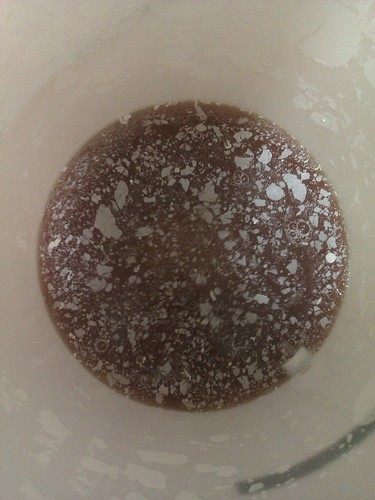
Yesterday I went to keg my brew after a secondary ferment. The primary was normal and I poured off into another fermenter for a week in secondary with some dry-hopping. When I went to keg yesterday I found a layer of this stuff sitting on the top. It didn't smell or taste acidic and the layer feels like yeast when I scrapped some off the side. I've just never seen this before, so I wasn't sure if I should be worried about it or not. The above pic is what was left after I transferred most of the brew into a keg.
I've never done a secondary ferment before. Can anyone tell me if this is normal or not?




